When it comes to junk food, kids are usually the most forgiving audience. Neon colors? Weird shapes? Ridiculous sugar levels? Bring it on. If it’s sweet, salty, or comes with a gimmick, chances are children will at least give it a try. But even the most sugar-hyped, snack-hungry kids have limits—and these 10 junk food disasters managed to cross every single one of them.
These aren’t just forgettable flops. They’re legendary failures. Snacks so ill-conceived, confusing, or downright disgusting that even children—the ultimate junk food connoisseurs—took one bite and said, “No thanks.” We’re talking about ketchup that came in alien colors, sodas that looked like antifreeze, cheese-flavored lip balm (yes, really), and cookies that crumbled like drywall and tasted worse. Even the appeal of celebrity endorsements or clever packaging couldn’t save these edible misfires.
Some of these products tried to ride food trends that no one asked for. Others were baffling attempts to “innovate” by mashing together completely incompatible flavors and textures. And then there are the ones that were clearly made by adults who forgot what kids actually like to eat—or assumed children would blindly accept anything marketed as “fun.”
In a world where kids will happily devour rainbow cereal, microwaveable pizza bites, and sprayable cheese, it takes a special kind of awful to get rejected outright. But these 10 junk foods managed to do just that. They weren’t just unpopular—they were actively disliked, often left half-eaten, and sometimes used more for pranks than for actual snacking.
So buckle up and prepare for a nostalgic trip through some of the most misguided, misunderstood, and downright gross food flops of all time. Even kids knew better.
1. Cereal Straws (Original Version)

Imagine breakfast cereal rolled into tube form – that was the promise of Cereal Straws. Kellogg’s brilliant idea fell flat when kids discovered these hollow tubes were about as appetizing as cardboard left in milk too long.
The straws quickly became soggy, leaving an artificial taste that lingered uncomfortably. Many children took one sip and abandoned the gimmick entirely.
Recently revived with a new formula, today’s version attempts to correct past mistakes, but the original remains a cautionary tale of breakfast innovation gone wrong. Sometimes a spoon is simply the superior milk-delivery system!
2. Pepsi Blue
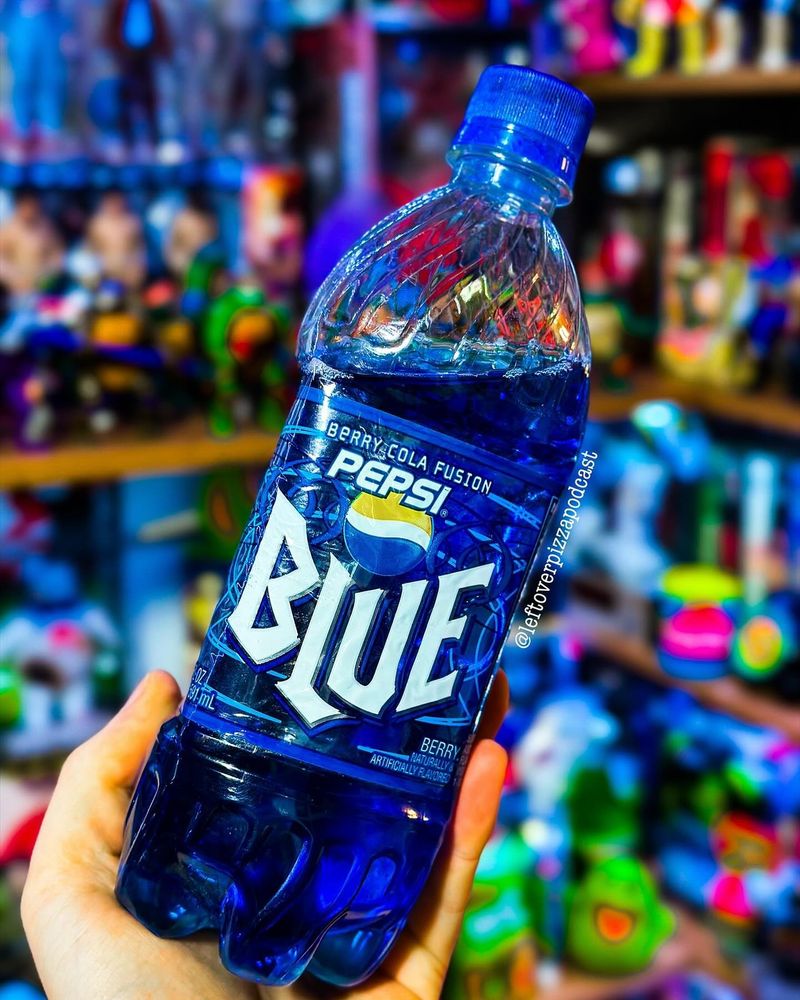
Launched in 2002, Pepsi Blue shocked soda fans with its electric blue color that resembled window cleaner more than something you’d willingly drink. The berry-cola fusion claimed to be revolutionary, but most kids found it revolting.
One sip revealed a confusing flavor profile – imagine melting down blue candy and mixing it with medicine. The artificial aftertaste lingered for hours afterward.
Despite aggressive marketing and teen-targeted campaigns, this neon nightmare vanished from American shelves by 2004. Even the most dedicated soda enthusiasts couldn’t pretend to enjoy this chemical concoction masquerading as a refreshing beverage.
3. EZ Squirt Colored Ketchup
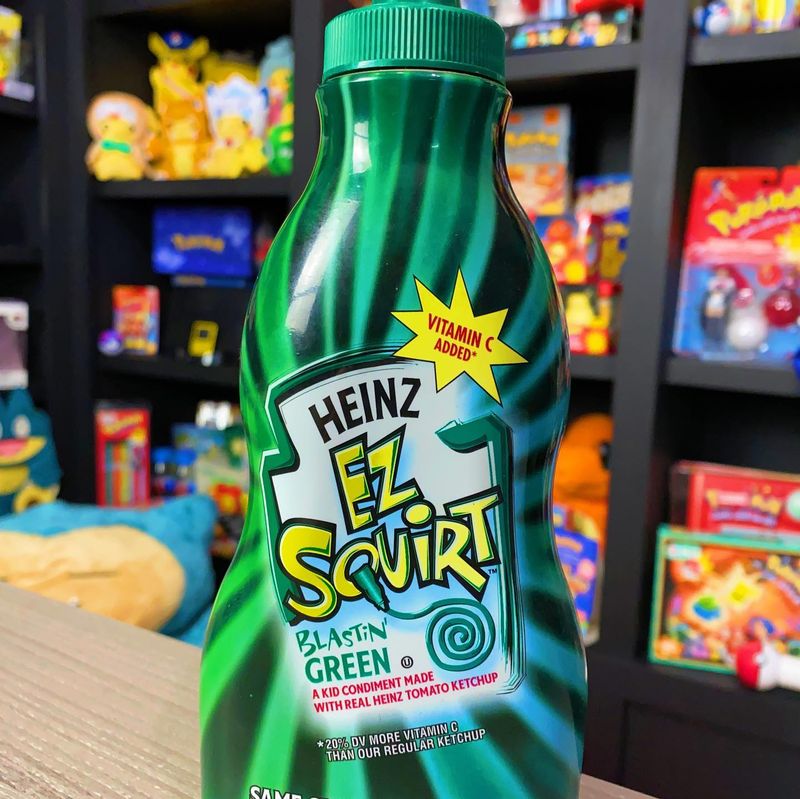
Purple ketchup on French fries? Heinz thought they had struck gold with their rainbow-colored condiments. The novelty factor lasted approximately one squeeze before reality set in – food shouldn’t be purple, green, or blue unless nature made it that way.
Kids initially begged parents for these colorful bottles, only to discover that visual appetite cues are hardwired for a reason. The unnatural hues made perfectly good food look spoiled or poisonous.
Parents universally despised these products too, as the dyes stained everything they touched. Launched in 2000, all EZ Squirt colors mercifully disappeared by 2006, proving some food traditions shouldn’t be messed with.
4. Heinz Baked Beans Pizza
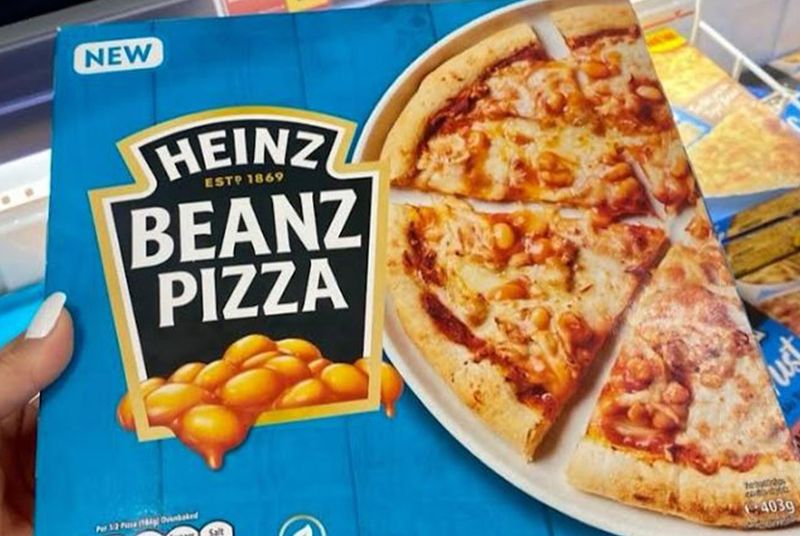
British food experiments don’t always translate well, as proven by this soggy disaster from the 1990s. Heinz thought combining two kid favorites – pizza and baked beans – would create an irresistible hybrid. They were catastrophically wrong.
The beans created a moisture problem that destroyed any hope of crispy crust. Each bite released an avalanche of sweet tomato sauce that overwhelmed any other flavors.
Children, normally defenders of even the strangest pizza variations, rejected this mushy mess. The product mercifully disappeared after a brief market run, though it occasionally resurfaces in conversations about the worst food combinations in history.
5. Hubba Bubba Squeeze Pop
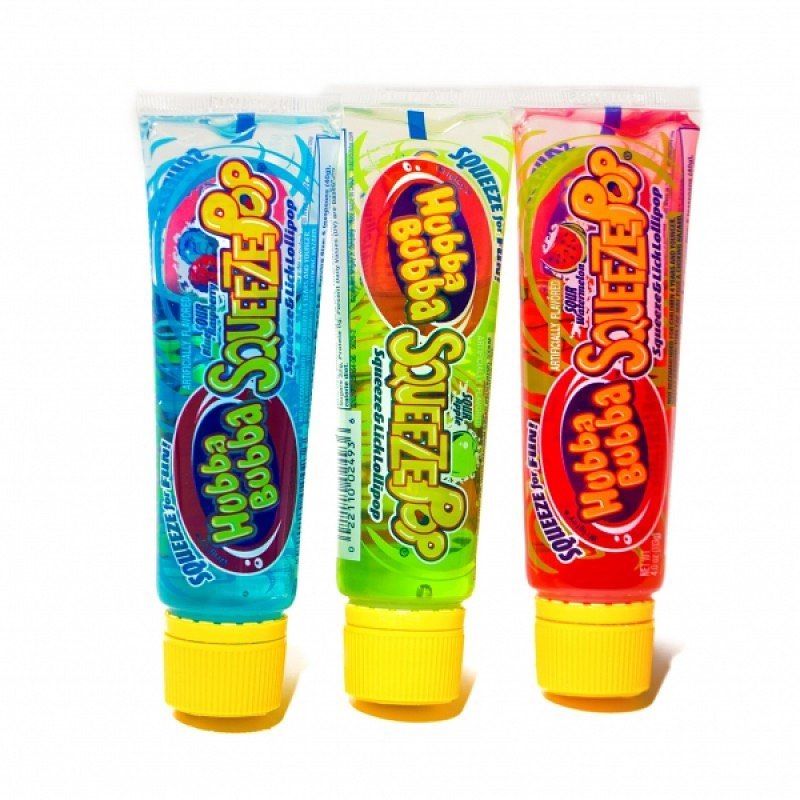
The concept seemed perfect for sugar-obsessed kids – liquid candy in a toothpaste-like tube that you could squeeze directly into your mouth! What could possibly go wrong?
Everything, as it turned out. The neon-colored gel created an intensely sweet coating that refused to dissolve naturally. Children found themselves desperately wiping their tongues after the novelty wore off seconds after the first taste.
Parents particularly loathed these sticky nightmares because the gel somehow ended up everywhere – clothes, furniture, car seats, and siblings’ hair. The artificial flavor lingered far longer than any enjoyment, making this a one-time purchase for most families.
6. Sprite Remix
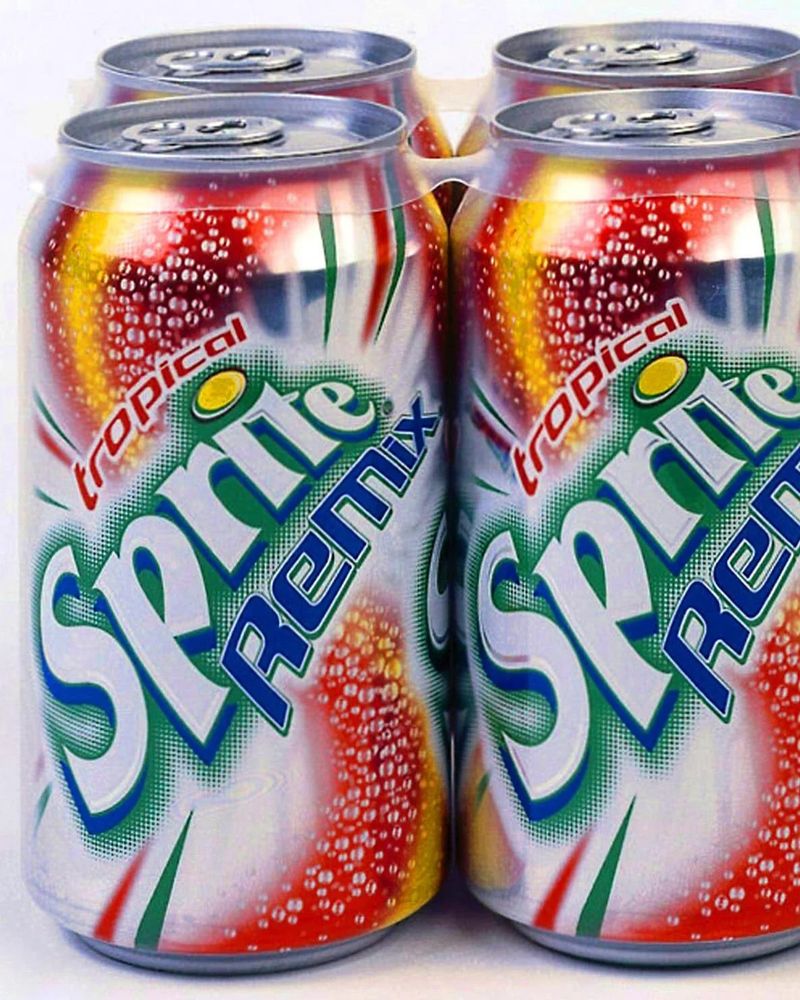
Coca-Cola executives apparently asked, “What if Sprite tasted like a melted popsicle?” and Sprite Remix was born. This early 2000s experiment attempted to jazz up the classic lemon-lime soda with tropical fruit flavors that nobody requested.
Young soda drinkers took tentative sips only to discover a confusing flavor profile that couldn’t decide what it wanted to be. The artificial fruit notes clashed horribly with the original Sprite base.
After cycling through various flavor combinations (Aruba Jam, Berryclear, Tropical) between 2003 and 2005, the Remix line fizzled out completely. Sometimes the original is popular for a reason – a lesson Coca-Cola learned the hard way.
7. Snackwell’s Devil’s Food Cookies
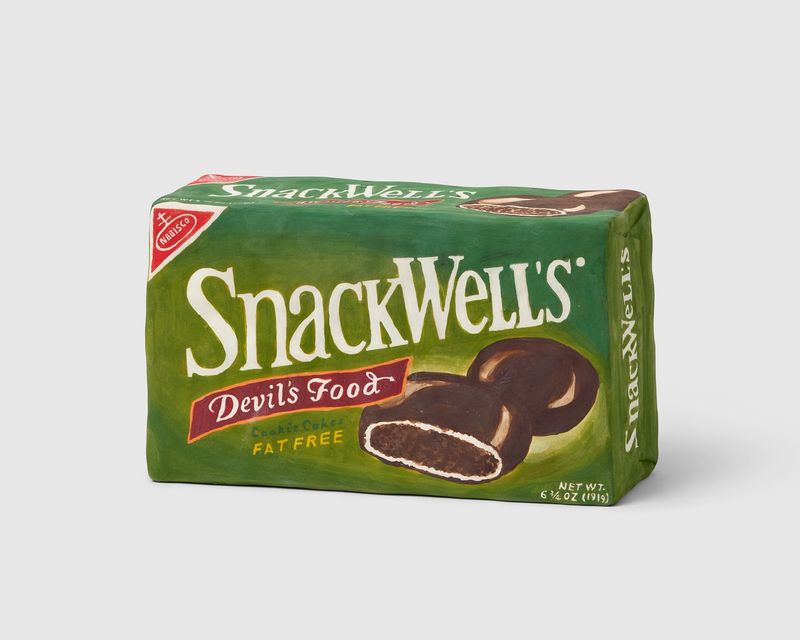
The 1990s fat-free craze created many food casualties, but few as disappointing as these cookies. Parents, desperate to provide “healthy” treats, stocked pantries with these sad imitations of real chocolate cookies.
Kids immediately detected the deception. The strange, spongy texture resembled chocolate-flavored packing material more than cookies. Each bite released odd chemical notes that lingered unpleasantly.
Most children would take one bite before abandoning the rest, leaving packages to grow stale in cupboards nationwide. While adults convinced themselves these were an acceptable substitute for real cookies, children knew better – some food pleasures simply can’t be engineered into low-fat alternatives.
8. Jell-O Pudding Pops (Re-released Version)
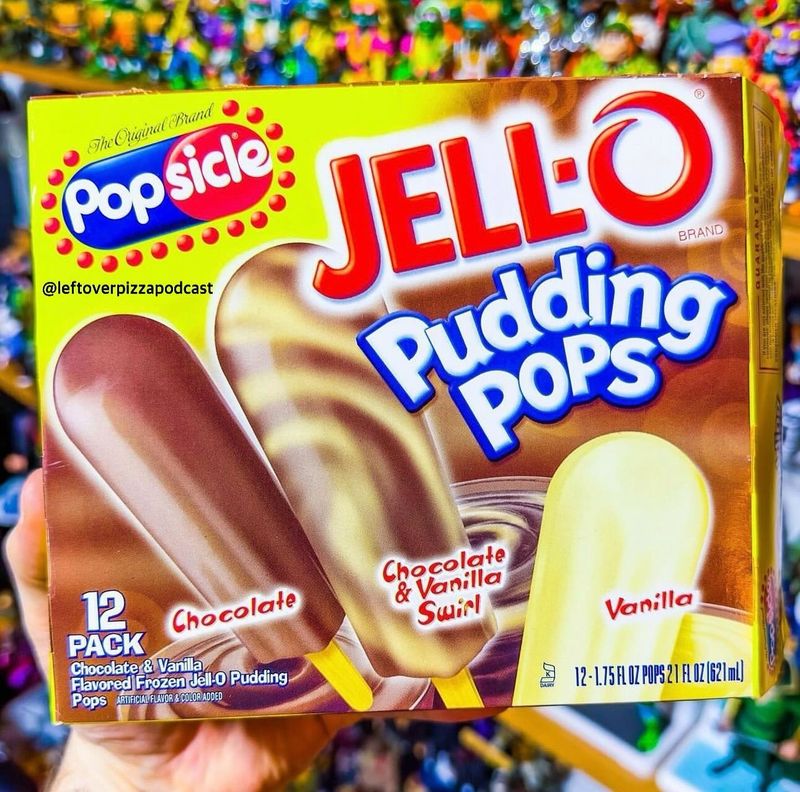
The original 1980s Pudding Pops hold a hallowed place in millennial childhood memories – creamy, flavorful frozen treats that defined summer afternoons. The 2000s relaunch, however, committed the unforgivable sin of ruining those memories.
Parents eagerly purchased these for their children, hoping to share a beloved experience from their own youth. Instead, kids encountered a watery, icy disappointment with muted flavors and a strange texture that crumbled rather than melted.
The disconnect between nostalgic expectations and disappointing reality doomed the product. Children, having no emotional attachment to the original, simply preferred other frozen treats, while parents felt betrayed by the inferior reformulation.
9. Doritos 3D (First Generation)
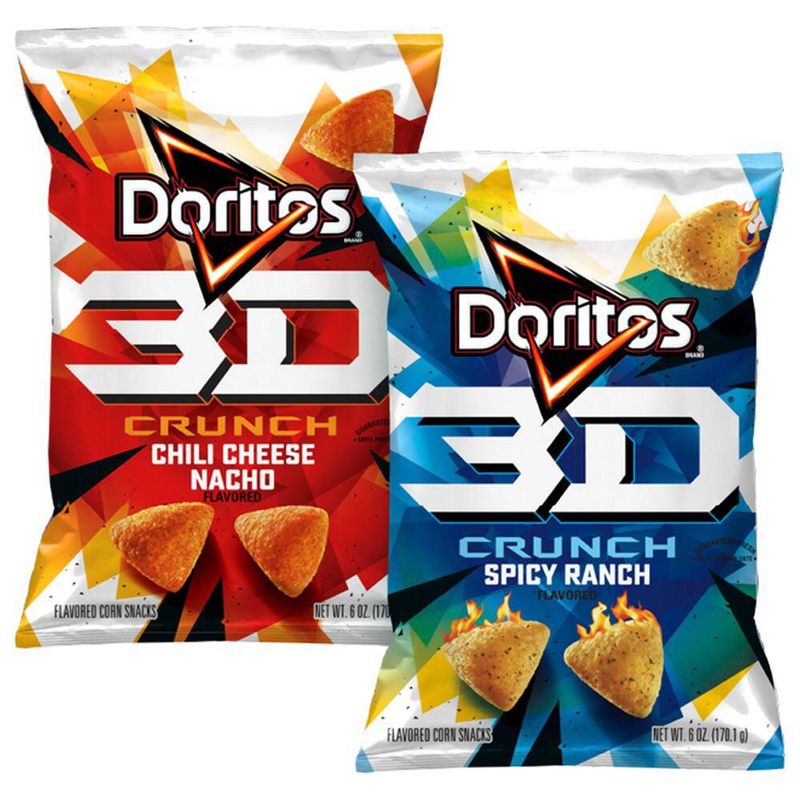
Before their successful modern comeback, the original Doritos 3D from the early 2000s were a textural nightmare. The puffed triangular shells promised a revolutionary snacking experience but delivered something closer to eating seasoned air pockets.
Kids, expecting the satisfying crunch of regular Doritos, instead found these hollow imposters collapsed immediately upon biting. The strange dissolution created an uncomfortable mouthfeel that many children actively avoided.
The flavor powder, having less surface area to cling to, would often dump entirely into your mouth in one concentrated blast. The modern version corrected these flaws, but the original remains a cautionary tale of innovation without improvement.
10. Cheetos Lip Balm
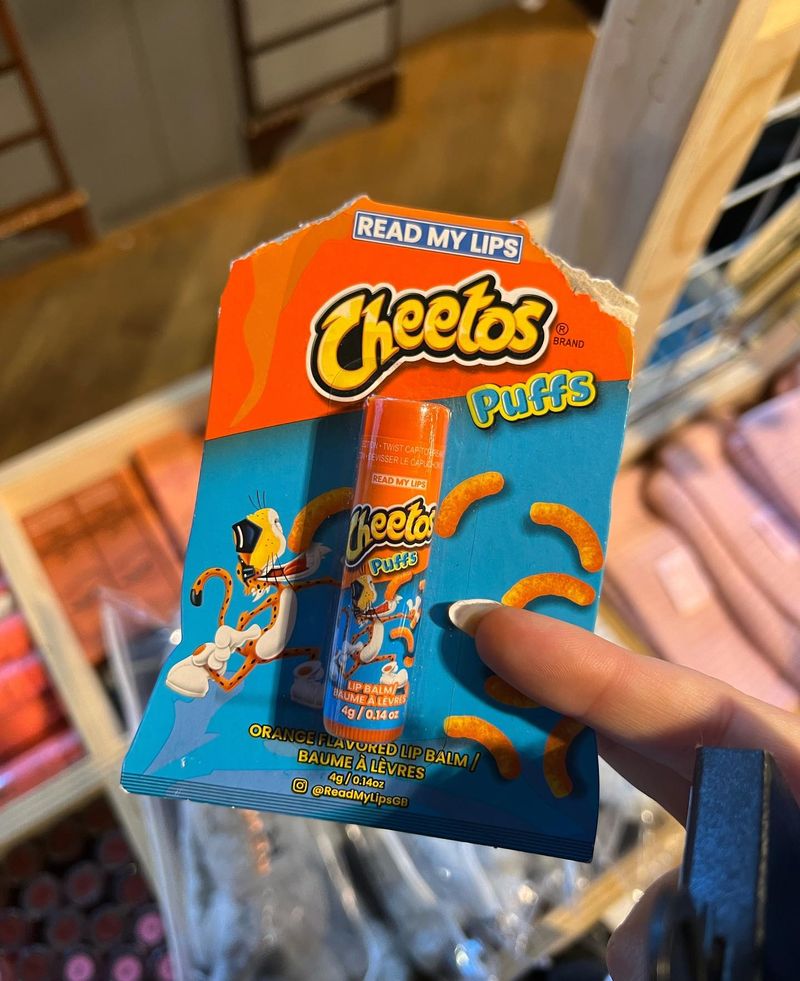
Some product ideas should never leave the brainstorming room. Cheetos Lip Balm stands as perhaps the most egregious example of brand extension gone horrifically wrong.
Children who loved the cheesy snack were horrified to discover that cheese-flavored lip products are fundamentally disturbing. The balm smelled exactly like the powdered cheese coating but created a nauseating sensation when applied to lips.
Most kids tried it exactly once – usually on a dare – before the product was relegated to the back of drawers or immediately trashed. Released in the early 2000s during the flavored lip balm craze, this product proved conclusively that some flavors belong exclusively in the snack aisle, not the personal care section.
Leave a comment